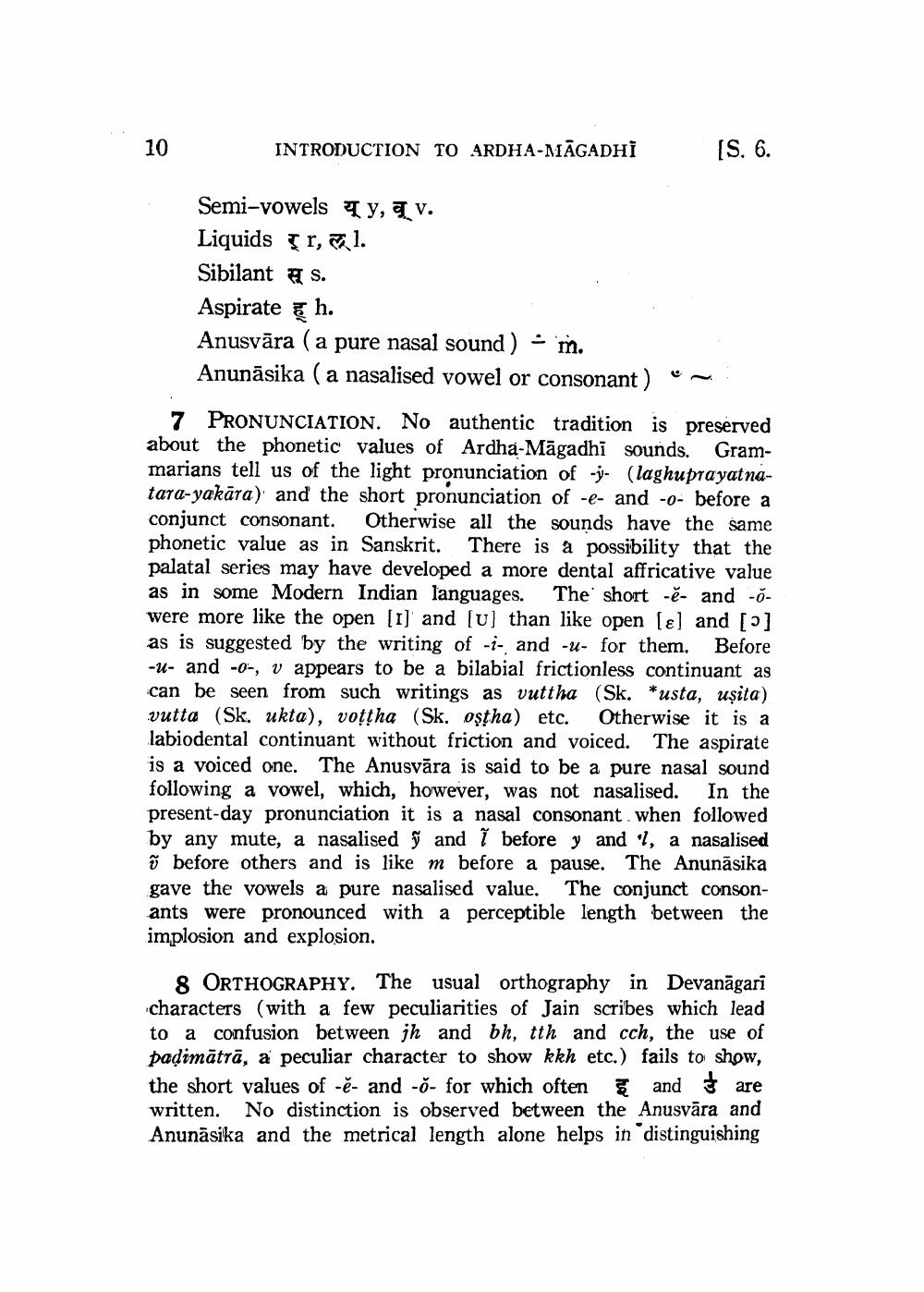________________
10
INTRODUCTION TO ARDHA-MĀGADHI
(S. 6.
Semi-vowels [ y, a v. Liquids Ir, . Sibilant Rs. Aspirateh. Anusvāra ( a pure nasal sound) - m.
Anunāsika (a nasalised vowel or consonant) • ~ 7 PRONUNCIATION. No authentic tradition is preserved about the phonetic values of Ardha-Māgadhi sounds. Grammarians tell us of the light pronunciation of -y- (laghuprayatnatara-yakāra) and the short pronunciation of -e- and -o- before a conjunct consonant. Otherwise all the sounds have the same phonetic value as in Sanskrit. There is a possibility that the palatal series may have developed a more dental affricative value as in some Modern Indian languages. The short -ě- and -- were more like the open [1] and [u] than like open [ɛ] and [?] as is suggested by the writing of -- and -u- for them. Before -U- and -o-, v appears to be a bilabial frictionless continuant as can be seen from such writings as vuttha (Sk. *usta, uşita) vutta (Sk. ukta), voţtha (Sk. oștha) etc. Otherwise it is a labiodental continuant without friction and voiced. The aspirate is a voiced one. The Anusvāra is said to be a pure nasal sound following a vowel, which, however, was not nasalised. In the present-day pronunciation it is a nasal consonant when followed by any mute, a nasalised ŷ and 1 before y and 'l, a nasalised õ before others and is like m before a pause. The Anunāsika gave the vowels a pure nasalised value. The conjunct consonants were pronounced with a perceptible length between the implosion and explosion.
8 ORTHOGRAPHY. The usual orthography in Devanāgari characters (with a few peculiarities of Jain scribes which lead to a confusion between jh and bh, tth and cch, the use of padimātrā, a peculiar character to show kkh etc.) fails to show, the short values of -ě- and -- for which often & and are written. No distinction is observed between the Anusvāra and Anunāsika and the metrical length alone helps in distinguishing




